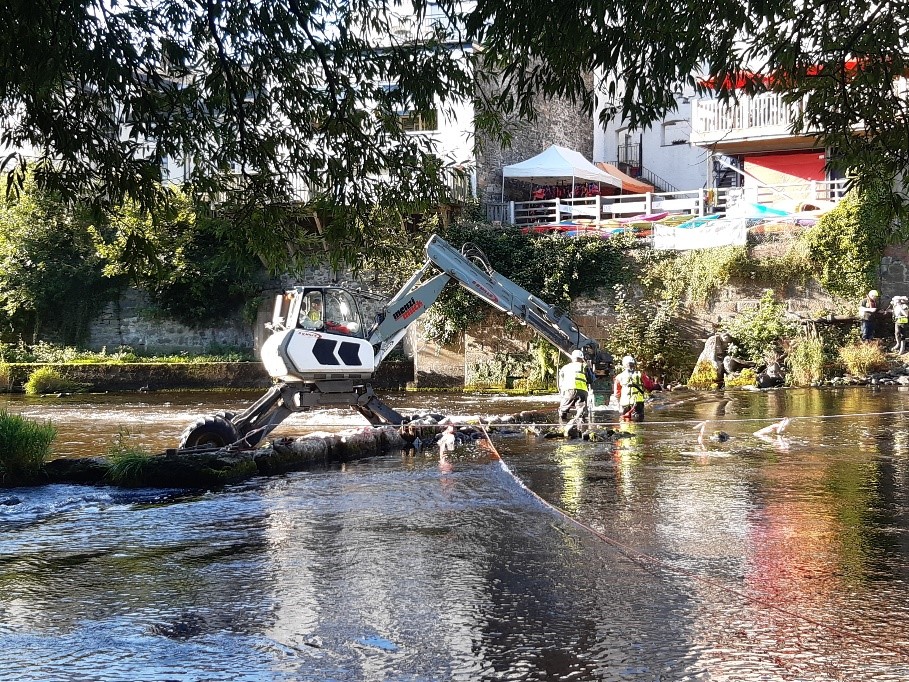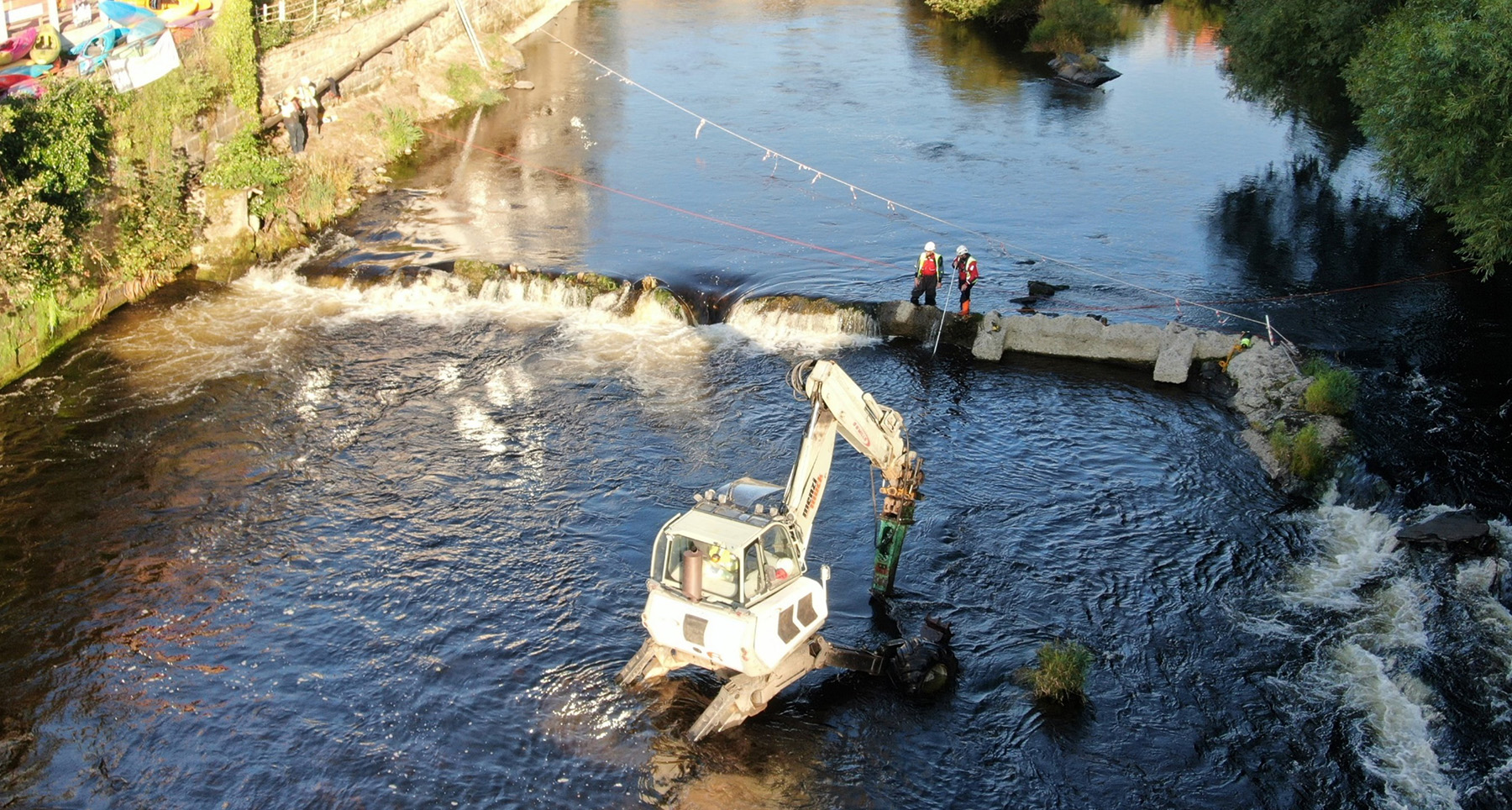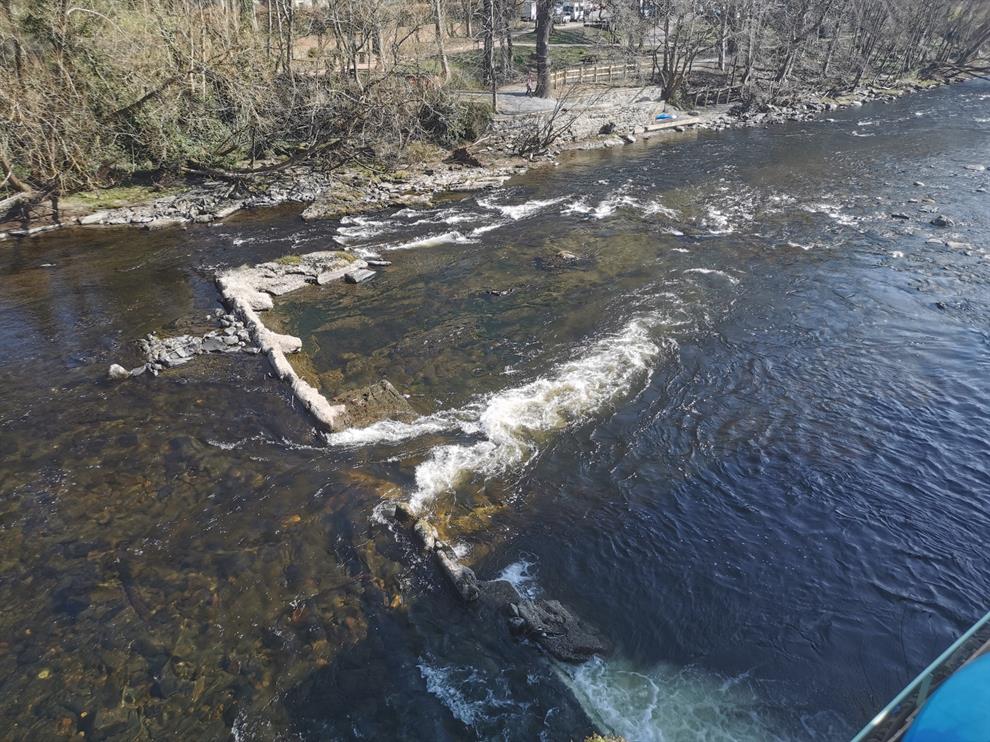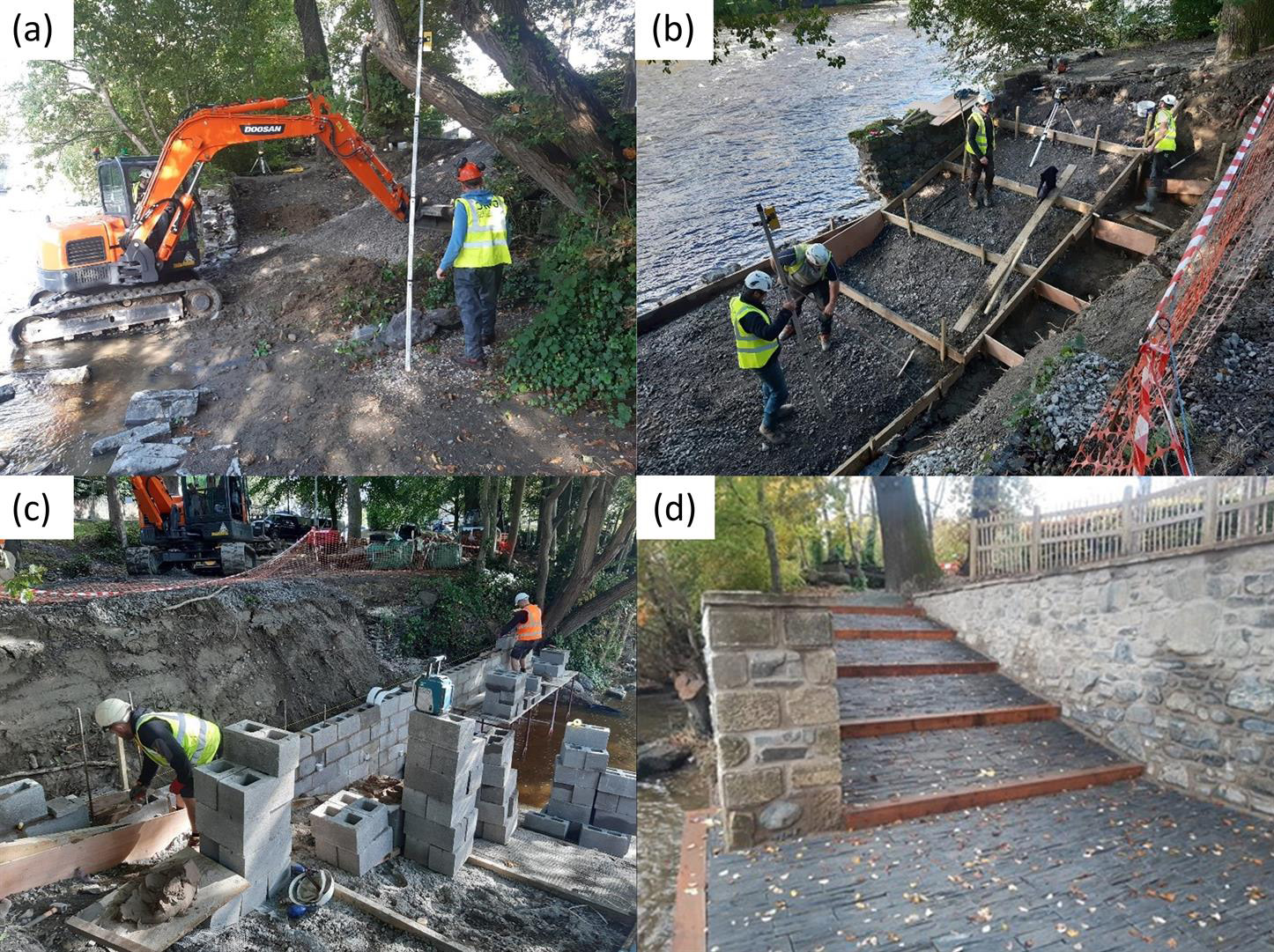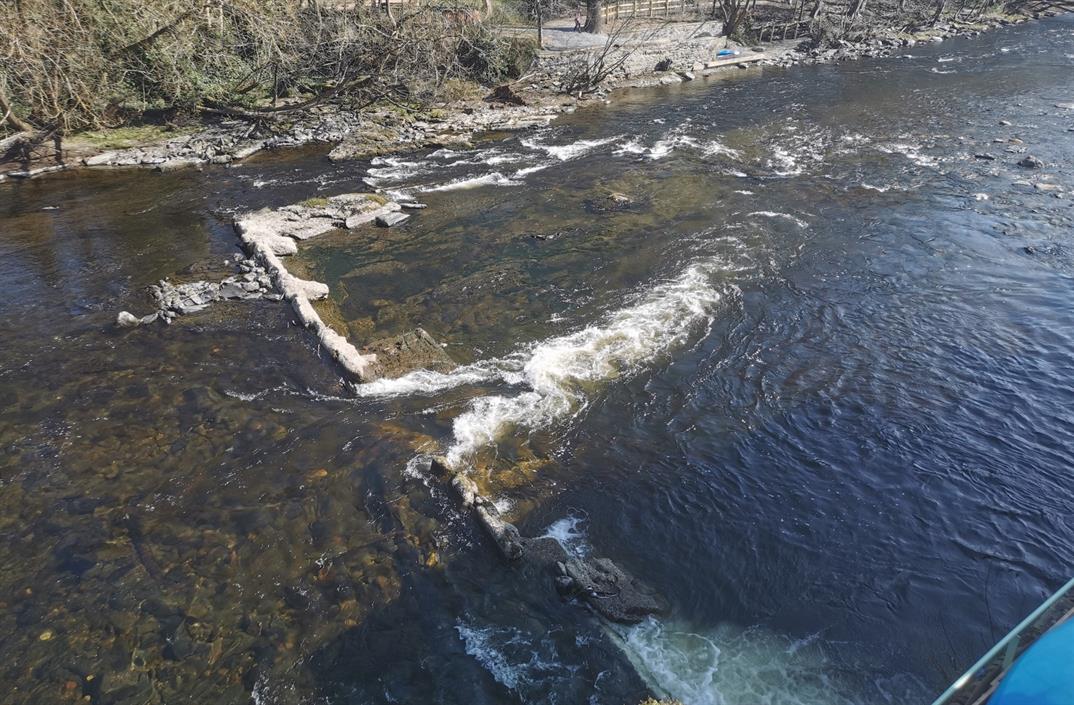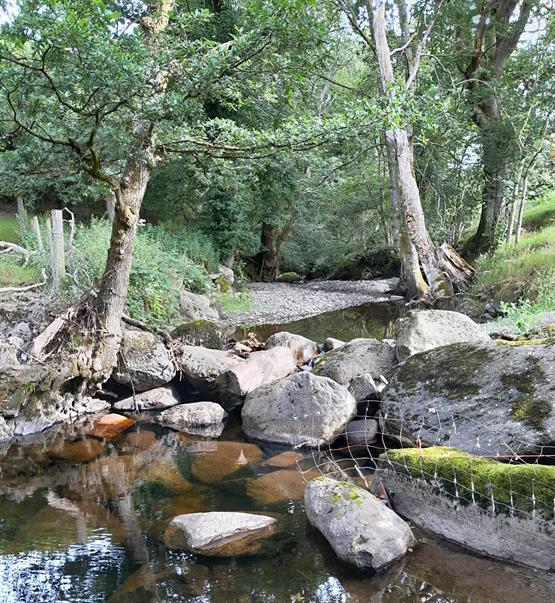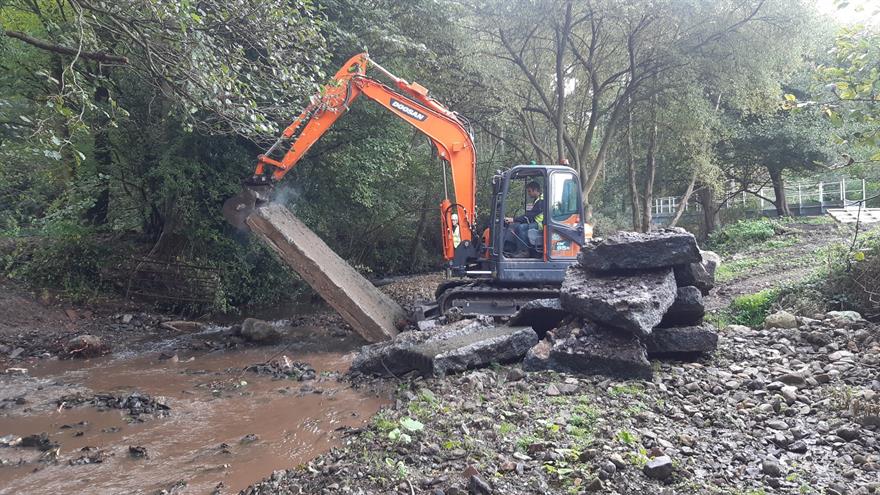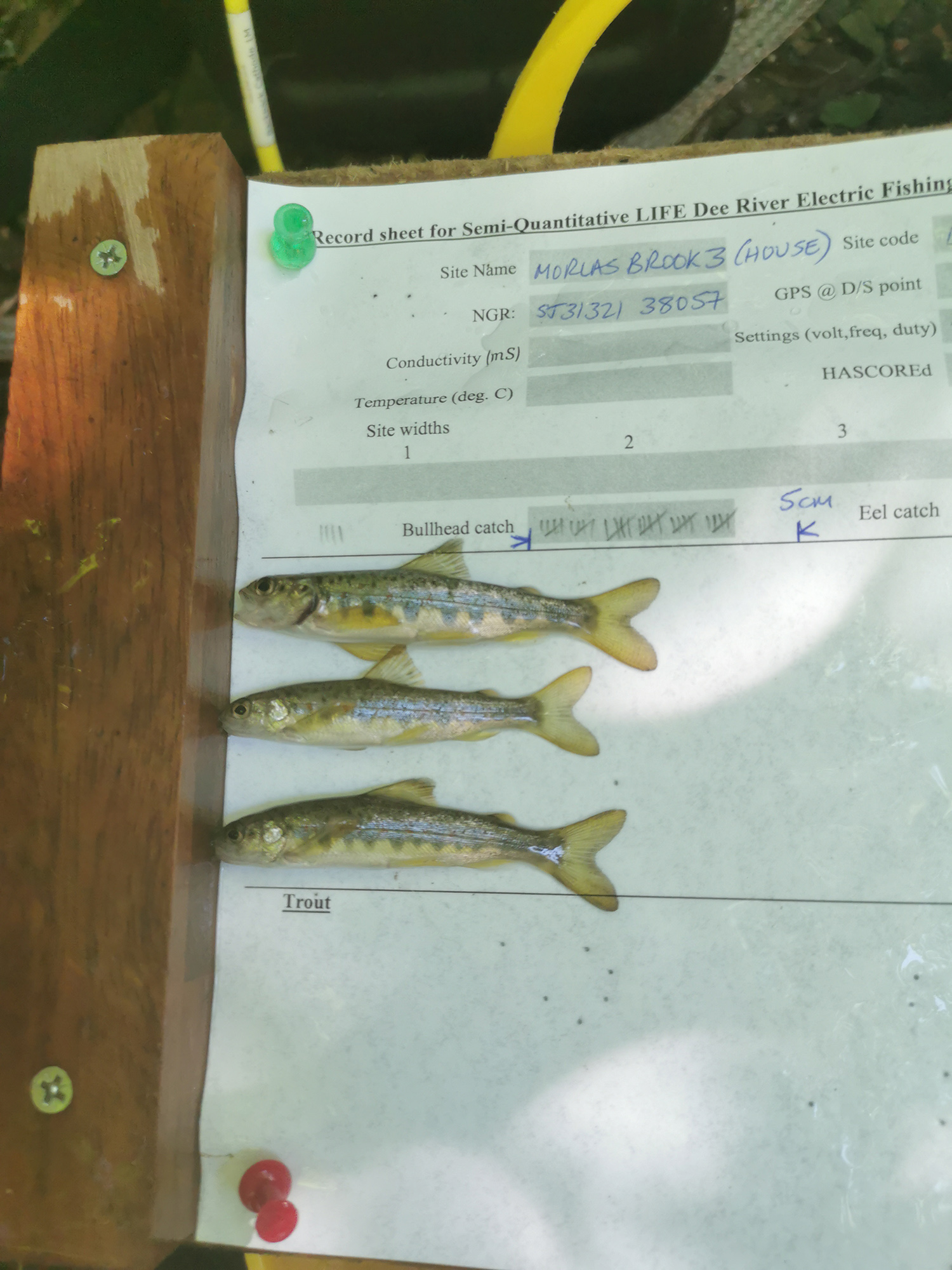Partial removal of Llangollen Lower Weir within the framework of LIFEDeeRiver Project, a multi-million, cross-border (Wales and England) project aiming to improve fish passage, river habitats and land management
River Dee
The River Dee springs from the uplands of Snowdonia in North-western Wales, it descends via Llyn Tegid (the largest natural lake in Wales), runs through the Vale of Llangollen and flows into the Atlantic Ocean just below Chester (Figure 1). It is the largest river in North Wales (~110 km long) with a catchment area of more than 1800 km2 and it provides water to farmed animals (mainly cattle and sheep) and to 2.5 million people. River Dee also offers many chances for recreational activities, like angling, rafting and canoeing/kayaking. However, and despite its high ecological importance and the fact that has been designated as a Special Area of Conservation, the River Dee is one of the most intensely regulated European rivers. As a result, all fish species inhabiting the River Dee are currently classified as in “unfavourable” conservation status.






